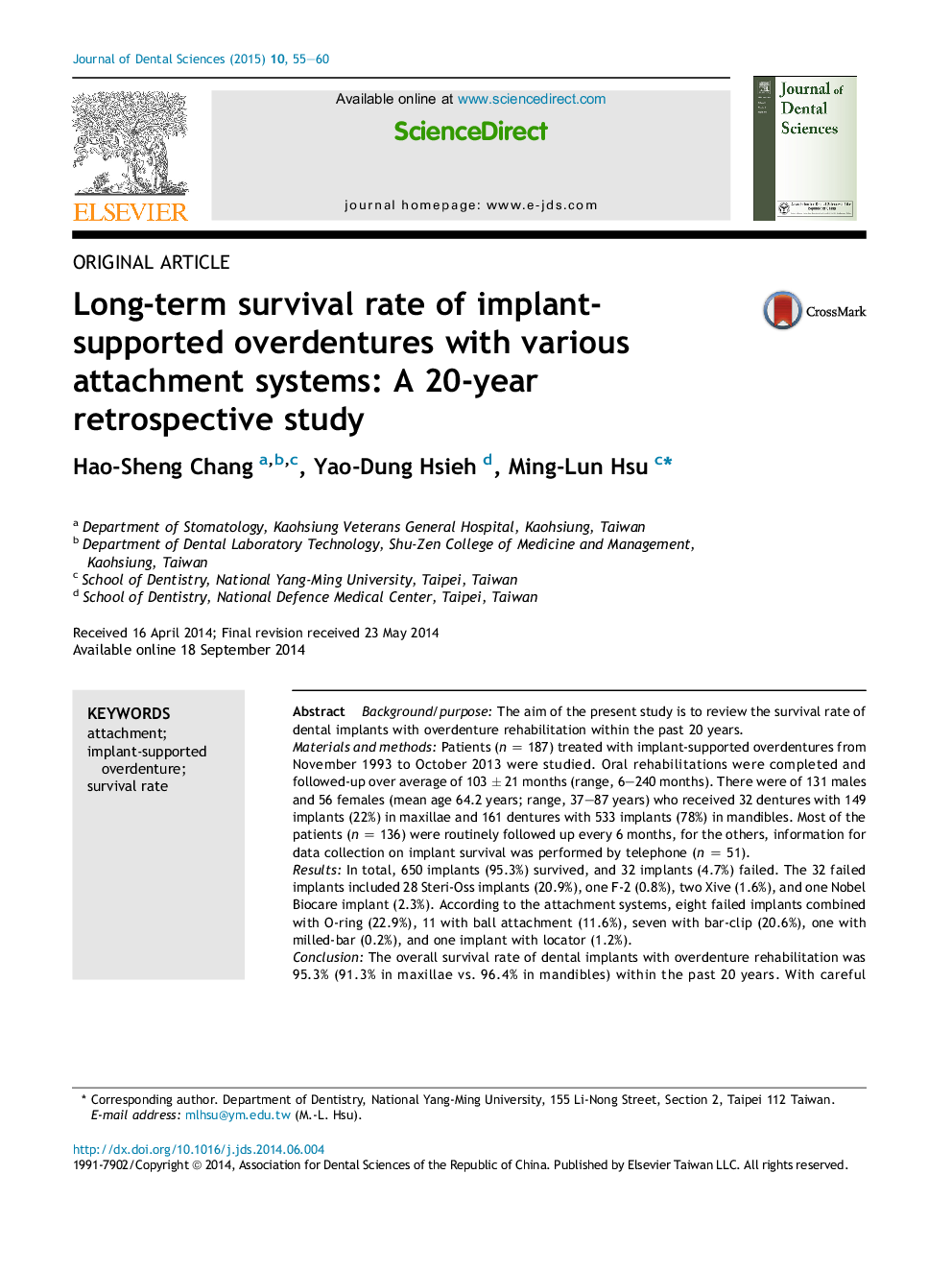| Article ID | Journal | Published Year | Pages | File Type |
|---|---|---|---|---|
| 3144667 | Journal of Dental Sciences | 2015 | 6 Pages |
Background/purposeThe aim of the present study is to review the survival rate of dental implants with overdenture rehabilitation within the past 20 years.Materials and methodsPatients (n = 187) treated with implant-supported overdentures from November 1993 to October 2013 were studied. Oral rehabilitations were completed and followed-up over average of 103 ± 21 months (range, 6–240 months). There were of 131 males and 56 females (mean age 64.2 years; range, 37–87 years) who received 32 dentures with 149 implants (22%) in maxillae and 161 dentures with 533 implants (78%) in mandibles. Most of the patients (n = 136) were routinely followed up every 6 months, for the others, information for data collection on implant survival was performed by telephone (n = 51).ResultsIn total, 650 implants (95.3%) survived, and 32 implants (4.7%) failed. The 32 failed implants included 28 Steri-Oss implants (20.9%), one F-2 (0.8%), two Xive (1.6%), and one Nobel Biocare implant (2.3%). According to the attachment systems, eight failed implants combined with O-ring (22.9%), 11 with ball attachment (11.6%), seven with bar-clip (20.6%), one with milled-bar (0.2%), and one implant with locator (1.2%).ConclusionThe overall survival rate of dental implants with overdenture rehabilitation was 95.3% (91.3% in maxillae vs. 96.4% in mandibles) within the past 20 years. With careful treatment planning, implant-supported overdenture is an interesting treatment alternative with better esthetic, retention, stability, and good hygienic maintenance for patients with severe ridge resorption.
